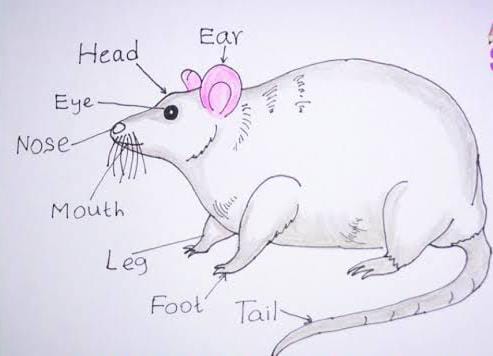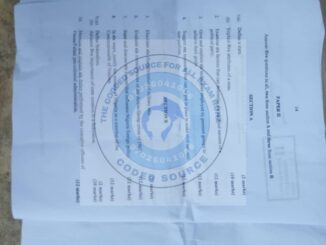
BIOLOGY PRACTICAL QUESTION;-ExamgrandComNg !!!!!




=======================================
BIOLOGY PRACTICAL ANSWERS;-ExamgrandComNg !!!!!
(1a)
Specimen A: Land snail
Specimen B: Toad
Specimen C: Spider
Specimen D: Crayfish
(1aii)
(i) Shells are used as source of calcium for animal feeds.
(ii) Its also serve as a source of animal protein for man.
(1aiii)
TABULATE
=SPECIMEN A=
(i)They have a soft, slimy body with a coiled shell on their back.
(ii) They move by using a muscular foot that glides over a layer of slime they produce.
=SPECIMEN B=
(i)They do not have a shell, but their skin is thick and covered in warts or bumps.
(ii)They have muscular hind legs designed for hopping
(1aiv)
(i) It allows researchers and ecologists to understand its role in the ecosystem
(ii) It aids in conservation efforts and wildlife management.
(1av)
(i) Webbed Feet
(ii) Large Muscular Thighs
(1bi)
(i) Specimen B (Toad): Amphibia
(ii) Specimen C (Spider): Arachnida
(iii) Specimen D (Crayfish): Malacostraca
(1bii)
(i) Eight legs
(ii) Multiple eyes
(1biii)

(1biv)
(i) Camouflaged exoskeleton
(ii) Paddle-like appendages
(iii) Sensory adaptations
=======================================
(2ai)
E: Spirogyra filaments.
F: Mucor/Rhizopus.
G: Groundnut seedling (A week old).
H: Maize seedling (A week old).
I: Microscope.
J: Slide (plain).
(2aii)
E habitat: Freshwater.
F habitat: Damp and decaying organic matter.
(2aiii)
E mode of nutrition: Autotrophic (photosynthesis).
F mode of nutrition: Saprophytic (absorbing nutrients from dead organic matter).
(2aiv)
One reason for classifying E in
(i)is its habitat in freshwater.
(2b)
Mount E and F separately on J and use I to observe the setup.
(2bi)
Observable features of E:
(i) Green coloration.
(ii) Long, filamentous structure.
(iii) Presence of chloroplasts.
Observable features of F:
(i) Fuzzy, cotton-like appearance.
(ii) Rapid growth and spreading.
(iii) Formation of sporangia.
The observed color of E is green, and its role in life is photosynthesis.
(i)Colour: Green
(ii) Role: Photosynthesis
(2ci)
(i)Class of G: Angiospermae (Dicotyledonae).
(ii)Class of H: Angiospermae (Monocotyledonae).
(2cii)
(i) Specimen G: Groundnut seedling (A week old) : Hypogeal Germination
(ii) Specimen H: Maize seedling (A week old) : Epigeal Germination
(2ciii)
(i) Specimen G: Groundnut seedling (A week old): Reticulate venation
(ii) Specimen H: Maize seedling (A week old): Parallel Venation
====================================
3ai) Specimen K: Pigeon
Specimen L: Agama Lizard
Specimen M: Rat
Specimen N: Tilapia
(3aii)
1: Scales
2: Tongue
3: Eyes
4: Ears
(3bi)
1: Wings
2: Hollow bones
3: Keen eyesight
4: Strong flight muscles
5: Beak adapted for capturing prey
3ci)
1: Wings
2: Keen eyesight
(3cii)

=======================================





Be the first to comment